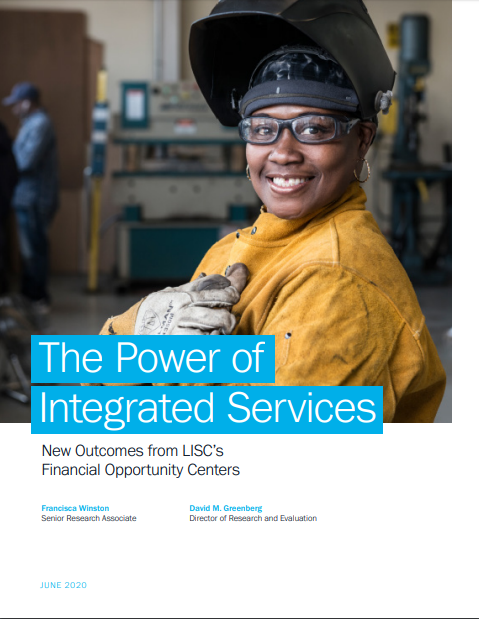The Power of Integrated Services
In this white paper the LISC Research & Evaluation team examines recent outcomes for Financial Opportunity Center (FOC) participants to assess the early success of the Bridges to Career Opportunities (BCO) model.
Executive Summary
Opportunity Gaps and the Financial Opportunity Center (FOC) Strategy
The U.S. faces significant challenges in income and wealth inequality, and around economic mobility— problems exacerbated by racial gaps. Fortunately, the fields of community and workforce development have developed proven strategies that can start to close racial, income, wealth, and opportunity gaps. One of them, LISC’s Financial Opportunity Center (FOC) model, supports community-based organizations delivering sustained assistance to residents where they live, through integrated services that address issues of income, wealth, and other support needs simultaneously.
Based on a model developed by the Annie E. Casey Foundation, the strategy has three, connected components. First, FOCs help connect people to jobs and training opportunities. Second, they provide financial coaching to address budgeting, banking, debt, and credit issues that can both drain families of resources and keep them from obtaining and sustaining employment. Third, to provide greater stability to families as they search for work and attempt to maintain employment, FOCs facilitate access to the public benefits individuals are entitled to but don’t always receive. The program’s theory of change is that these braided components of coaching will enhance each other and promote greater outcomes than each alone.
In recent years, external evaluators and LISC research have found positive impacts of FOCs.1 Since these studies were published, the model has continued to evolve, to improve outcomes, and to respond to emerging needs among populations that need the most support. One such evolution is the Bridges to Career Opportunities (BCO) model, which connects people with training programs in sectors such as health, construction, and manufacturing while continuing to offer the integrated support typical of all FOCs.
To examine recent outcomes for FOC participants, and to assess the early success of the Bridges model, LISC Research and Evaluation analyzed recorded results for over 18,000 individuals over a three-year time frame that began with the adoption of a new data platform.2 Our study examines outcomes data for every participant who consented to participation in research, spanning 100 organizations in 27 local markets. It shows the results of the FOC model in a variety of contexts, including urban and rural, and in different regions throughout the country, for clients who enrolled between January 1, 2016, and December 31, 2018, and whose outcomes are traced from January 1, 2016, to March 31, 2019.
